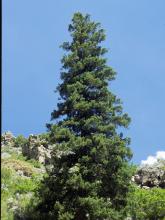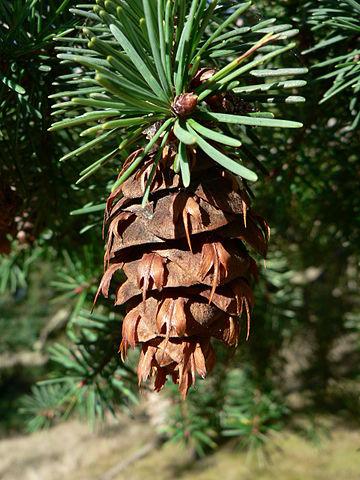
Image Credit: wildflower.org
Common name(s): Douglas-fir, red-fir, Oregon-pine, Douglas-spruce
General bloom time: bud break is in the spring the year before a cone crop
Identification: Grow more than 200 feet tall; wide range of elevations
Needles: about 1 inch long; grow spirally, all around the twigs; a single needle is flat, yellow-green, with a pointed tip
Fruit: cones are 2-3 inches long, oblong shaped, forked, with snake-tongue-like bracts extending from each scale
Habitat: well-aerated soil; does not do well in poorly drained or compacted soils
Ecology: Seeds are extremely important food for small mammals. Mice, voles, shrews, and chipmunks consumed an estimated 65 percent of a Douglas-fir seed crop following dispersal in western Oregon. Seeds are important in the diets of winter wren, pine siskin, song sparrow, golden-crowned sparrow, white-crowned sparrow, red crossbill, dark-eyed junco, and purple finch. Pine white caterpillars use the needles for food.

Fun Facts:
- Not a true fir, pine, or spruce
- Can live for 1000 years!
- Approximately 2,000 species of fungi have been identified as potential symbionts with this tree
- Native Americans brewed tea from the needles and twigs
Places to find in Portland: Forest Park
References: